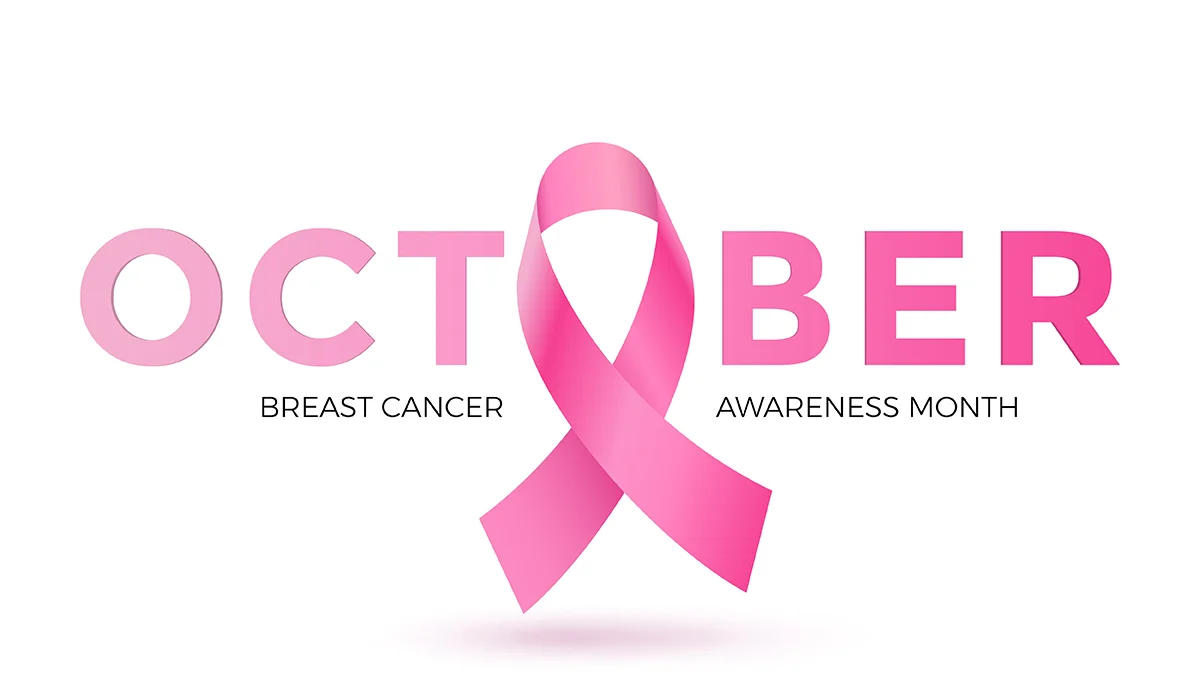Breast cancer touches many lives, and raising awareness in our Alpharetta community is more important than ever. I believe that understanding what to look for and taking proactive steps can make a significant difference in early detection and prevention. Let’s explore the signs, how to perform self-exams, delve deeper into risk factors, and discuss effective prevention measures to empower ourselves and those we care about.
Recognizing the Signs of Breast Cancer
Early detection of breast cancer greatly improves treatment success rates. Being attentive to any changes in your breasts is crucial. Key signs to watch for include:
- New Lumps or Masses: Any lump, hard knot, or thickening in the breast or underarm area should be evaluated by a healthcare professional. Not all lumps are cancerous, but it’s important to have them checked.
- Swelling or Skin Irritation: Look for swelling, warmth, redness, or darkening of the breast skin. These changes could indicate inflammation or other underlying issues.
- Changes in Breast Size or Shape: Sudden changes in size or shape of one or both breasts may signal a problem.
- Skin Dimpling or Puckering: Dimpling can resemble the texture of an orange peel and may indicate changes beneath the skin’s surface.
- Nipple Changes: Be aware of nipple inversion, pain, or any discharge that isn’t breast milk, especially if it’s bloody or occurs without squeezing.
- Persistent Pain: Any unexplained pain in one spot that doesn’t go away should be assessed.
By paying close attention to these signs, you can take timely action. Remember, early detection saves lives.
How to Perform a Breast Self-Exam
Regular self-exams are a proactive way to monitor your breast health. They help you become familiar with how your breasts normally look and feel, making it easier to notice any changes.
- In the Shower
- Step 1: Raise your right arm behind your head.
- Step 2: Using the pads of your left hand fingers, move around your right breast gently in small circular motions covering the entire breast area and armpit.
- Step 3: Feel for any lumps, thickening, or hardened knots.
- Step 4: Repeat these steps for your left breast using your right hand.
- In Front of a Mirror
- Step 1: Stand with your shoulders straight and arms at your sides.
- Step 2: Look for any changes in breast shape, size, or symmetry.
- Step 3: Raise your arms overhead and look for the same changes.
- Step 4: Place your hands on your hips, press firmly to flex your chest muscles, and observe any dimpling, puckering, or changes, especially on one side.
- Lying Down
- Step 1: Lie down on your back with a pillow under your right shoulder and your right arm behind your head.
- Step 2: Using your left hand, move the pads of your fingers around your right breast gently in small circular motions covering the entire breast and armpit area.
- Step 3: Vary your pressure between light, medium, and firm to feel all levels of breast tissue.
- Step 4: Repeat the process on your left breast.
Perform this self-exam once a month, preferably a few days after your menstrual cycle ends when breasts are least likely to be swollen or tender. If you’re postmenopausal, choose a consistent day each month. If you notice any changes, please consult a healthcare professional promptly.
Understanding Risk Factors
Understanding the risk factors associated with breast cancer empowers you to make informed decisions about your health. Some risk factors are beyond our control, while others are lifestyle-related and can be managed.
- Non-Modifiable Risk Factors
- Age: The risk increases with age, especially after 50. Most breast cancers are diagnosed in women over 55.
- Genetic Mutations: Inherited mutations in genes like BRCA1 and BRCA2 significantly increase the risk. These genes normally help repair DNA, but when mutated, they can lead to cancer development.
- Family History: A family history of breast cancer, especially in a first-degree relative (mother, sister, daughter), raises your risk. If multiple family members are affected, the risk is even higher.
- Personal Health History: If you’ve had breast cancer in one breast, there’s an increased risk of developing it in the other breast or another part of the same breast.
- Reproductive History: Early menstruation before age 12 or late menopause after 55 increases exposure to estrogen and progesterone, hormones linked to breast cancer risk.
- Dense Breast Tissue: Dense tissue can make it harder to detect tumors on mammograms and is linked to a higher risk.
- Modifiable Risk Factors
- Lifestyle Factors: Choices such as smoking, excessive alcohol consumption, poor diet, and lack of physical activity contribute to a higher risk.
- Weight and Obesity: Being overweight or obese after menopause increases risk due to higher estrogen levels produced by fat tissue.
- Radiation Exposure: Previous radiation therapy to the chest before age 30 can increase risk.
- Other Considerations
- Pregnancy History: Women who haven’t had a full-term pregnancy or who had their first child after age 30 may have a slightly higher risk.
- Environmental Factors: Exposure to certain chemicals and pollutants is being studied for possible links to breast cancer.
By understanding these risk factors, you can work with your healthcare provider to develop a personalized plan to monitor and reduce your risk.
Effective Prevention Measures
While some risk factors cannot be changed, many lifestyle choices can help reduce your risk of breast cancer. Here are detailed prevention strategies:
- Maintain a Healthy Weight
- Balanced Diet: Focus on a diet rich in fruits, vegetables, whole grains, and lean proteins. Limit processed foods and sugars.
- Portion Control: Be mindful of portion sizes to avoid overeating.
- Regular Monitoring: Keep track of your weight and body mass index (BMI) to stay within a healthy range.
- Stay Physically Active
- Regular Exercise: Aim for at least 150 minutes of moderate aerobic activity or 75 minutes of vigorous activity each week.
- Strength Training: Include strength training exercises at least twice a week.
- Active Lifestyle: Incorporate physical activity into your daily routine, such as taking the stairs or walking during breaks.
- Limit Alcohol Consumption
- Moderation is Key: Limit yourself to no more than one alcoholic drink per day.
- Healthy Alternatives: Choose non-alcoholic beverages like water, herbal teas, or sparkling water with a splash of fruit juice.
- Avoid Smoking
- Quit Smoking: Seek support to quit smoking if you currently smoke.
- Avoid Secondhand Smoke: Stay away from environments where you might inhale others’ smoke.
- Eat a Nutritious Diet
- Antioxidant-Rich Foods: Include foods high in antioxidants like berries, dark leafy greens, and nuts.
- Omega-3 Fatty Acids: Incorporate sources like salmon, flaxseeds, and walnuts.
- Fiber Intake: Increase fiber consumption with whole grains, legumes, fruits, and vegetables.
- Regular Screenings and Medical Care
- Mammograms: Follow guidelines for regular mammograms based on your age and risk factors.
- Clinical Breast Exams: Have regular exams performed by a healthcare professional.
- Genetic Counseling: If you have a family history, consider genetic testing and counseling.
- Environmental Awareness
- Limit Exposure: Be cautious with chemicals in household products and opt for natural or organic options when possible.
- Safe Food Practices: Wash fruits and vegetables thoroughly to remove pesticides.
- Stress Management
- Mindfulness Practices: Engage in activities like yoga, meditation, or deep-breathing exercises.
- Adequate Sleep: Aim for 7-9 hours of quality sleep each night to support immune function.
By integrating these prevention measures into your daily life, you actively reduce your risk and promote overall health.
Let’s Take Action Together
At Advanced Medical & Weight Loss Center, my commitment is to provide personalized care that addresses your unique health needs. Integrating functional medicine principles, I focus on identifying and addressing the root causes of health concerns rather than just treating symptoms.
- Holistic Approach: We consider all aspects of your health, including lifestyle, nutrition, and emotional well-being.
- Collaborative Care: I work closely with you to develop a tailored plan that aligns with your health goals.
- Educational Resources: Providing you with the knowledge and tools you need to make informed decisions is a cornerstone of my practice.
Schedule Your Discovery Call Today
Your health and well-being are my top priorities. I invite you to schedule a discovery call to discuss your concerns, assess your risk factors, and explore how we can work together toward your wellness goals.
Call 770-467-3975 to schedule your discovery call with me, Dr. Nick Sidhu at Advanced Medical & Weight Loss Center. Together, we can enhance breast cancer awareness in Alpharetta, GA and empower each other to lead healthier, more informed lives.
References
- American Cancer Society. (2023). Breast Cancer Early Detection and Diagnosis. Retrieved from https://www.cancer.org
- National Breast Cancer Foundation. (2023). Breast Self-Exam. Retrieved from https://www.nationalbreastcancer.org
- Centers for Disease Control and Prevention. (2023). What Are the Risk Factors for Breast Cancer? Retrieved from https://www.cdc.gov
- Mayo Clinic. (2023). Breast Cancer Prevention: How to Reduce Your Risk. Retrieved from https://www.mayoclinic.org
- World Health Organization. (2023). Breast Cancer: Prevention and Control. Retrieved from https://www.who.int
By taking these steps and staying informed, we can make a meaningful impact on breast cancer awareness in Alpharetta, GA. Let’s support one another in this journey toward better health and well-being.






